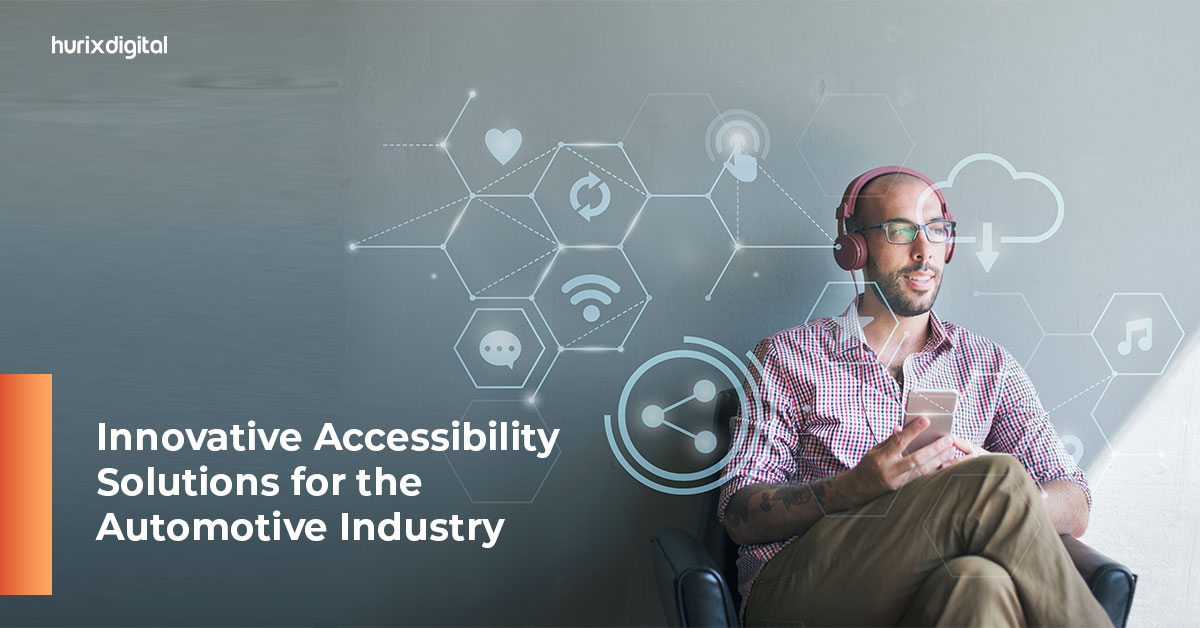
Innovative Accessibility Solutions For The Automotive Industry
With growing awareness regarding accessibility and disability, all brands in the automotive industry are now focusing on empowering the lives of individuals with disabilities. Consequently, cars now have various accessibility features like adjustable seats, in-car assistants, etc.
These features and technology make it easier for people with disabilities to drive the car and enter & exit it conveniently. If you are also looking for innovative accessibility solutions in the automotive industry, you are at the right place.
However, before we begin to explore innovative accessibility solutions, let us first understand what exactly accessibility solutions mean in the automotive industry.
What Is Automotive Industry Accessibility Solution?
Automotive industry accessibility solutions are very similar to web accessibility solutions. They can be understood as technological changes and designs incorporated into a vehicle to make it more accessible to individuals with permanent, temporary, or situational disabilities.
A decade back, there was a lack of awareness regarding accessibility solutions in the automotive industry. However, with ongoing technological advancement and growing consciousness in the past decade, automotive industries have enthusiastically adopted accessibility solutions. Although there have been manifold transformations and development in automobile design and accessibility solutions, there is still a lot of scope for improvement.
The autonomous car industry is expected to grow into a $62.5 billion market by 2026. This growth will play a huge role in improving the lives of disabled individuals by providing them with easy and accessible transportation options. Additionally, it will offer them a chance to keep their independence and equal participation in society.
Automotive Industry Accessibility Solution Trends
Mentioned here are some recent accessibility solutions developments in the automotive industry:
1. Inclusive Design
Almost all automobile brands are now quickly adopting inclusive designs and technologies to ensure their vehicle can be driven comfortably by people with disabilities. These inclusive designs include many features to ensure inclusivity for people with physical and cognitive disabilities.
Some inclusive design examples in automobiles are:
- Adjustable seats that can be easily modified to accommodate different body types and physical abilities.
- Large mirrors and rearview cameras give the driver a better view of the surroundings.
- Control interfaces that are easy to understand and use, such as touchscreens or voice-activated controls.
- Automatic features compensate for drivers’ physical limitations or other impairments. Example of these features is automatic emergency braking, lane departure warning systems, etc.
- Accessible storage areas that are easy to reach and use for people with mobility limitations.
2. Advanced Driver Assistance Systems (ADAS):
ADAS technologies go a long way in allowing drivers to operate their vehicles more securely and efficiently. Advanced driver assistance systems include multiple technologies like emergency braking, blind spot detection, lane change warning system, etc.
Additionally, another beneficial feature of advanced driver assistance systems is that they provide feedback or corrective action warning to the driver as and when required. For instance, if the driver starts driving the car without wearing the seat belt, the ADAS will ask the driver to wear the seatbelt and make a beeping sound.
Examples of ADAS technologies are:
- Adaptive Cruise Control (ACC): This feature automatically adjusts the speed of the vehicle to ensure there is a safe distance from the car driving in the front.
- Forward Collision Warning (FCW): This feature warns the driver when they are approaching the car in the front at a very fast speed.
- Automatic Emergency Braking (AEB): This feature automatically applies the brakes if the vehicle detects an imminent collision and the driver is not taking corrective measures.
- Parking Assistance: This feature provides guidance and assistance to help the driver park the vehicle safely.
3. Autonomous Vehicles
Autonomous vehicles (AVS), also referred to as driverless or self-driving cars, are rapidly expanding in popularity. As of now, there are more than 30 million autonomous vehicles globally. AVS or self-driving cars are automobiles that drive independently without any human input.
They automatically sense the environment around them and navigate accordingly. These self-driving machines utilize several technological combinations like artificial intelligence, cameras, advanced sensors, machine learning algorithms, etc.
These autonomous vehicles differ according to the level of autonomy. Currently, they come in six levels of autonomy:
- Level 0: No Automation
- Level 1: Driver Assistance
- Level 2: Partial Automation
- Level 3: Conditional Automation
- Level 4: High Automation
- Level 5: Full Automation
The ongoing advancements in the self-driving car industry will continue to improve the lives of people with disability as it will offer them more independence and mobility solutions. As of now, several automobile industries are testing autonomous vehicles. Autonomous vehicles are expected to become more common in the coming years.
4. Mobility as a Service (MaaS)
MaaS, or mobility as a service, can be understood as a transportation model that allows users to access multiple transportation models through a singular platform. The various modes are ridesharing, public transit, bike sharing, carpooling, etc.
This advanced transportation model utilizes various advanced technology features like mobile apps, data analytics, live location tracking, and much more to provide users with real-time information about transportation options. It also notifies the user of other important information related to cost, travel time, and availability.
It is a relatively new concept and is still in its early stages of development. However, it can go a long way in allowing people with disabilities to access multiple traditional transportation options. Some of its other benefits include eliminating traffic congestion, improving transportation efficiency, and reducing the environmental impact of transportation.
5. In-Car Assistants
Similar to Apple’s Siri and Amazon’s Alexa, automobile brands are also launching in-car assistants to make driving safer and more convenient. These in-car assistants can be understood as intelligent virtual assistants, which will provide drivers assistance while driving.
These assistants use various technological apparatuses like natural language processing, machine learning, artificial intelligence technologies, etc. These assistants can quickly understand and interpret voice commands and provide relevant responses or actions.
In-car assistants can provide with a variety of tasks like:
- Navigation
- Entertainment
- Communication
- Climate control
- Vehicle settings
- Cruise control
- Parking
Closing Thoughts
The automotive industry accessibility solutions are very important as it allows people with disability to drive and access vehicles more safely and conveniently. Before these automobile accessibility solutions, people with disabilities had a tough time commuting from one place to another independently.
Lastly, as the global population ages, there is a growing need for automotive industry accessibility solutions to support older adults with mobility limitations. By providing accessible and safe transportation options, automotive companies can contribute to creating a more inclusive and equitable society.
If you want to learn more about accessibility solutions in the automotive industry, you can reach out to us at Hurix Digital. We are a growing digital content solution & digital technology industry and can help you clear all your doubts and queries.

SVP & Head – Hurix Technology Solutions
Global Delivery head with 25 years of working experience in NYC investment banks and fintech companies. Hands-on technology delivery management and program management, accountable for stakeholder relationships, Strategic roadmap, P&L, Revenue growth, Account Management, and employee satisfaction.




